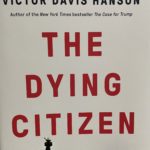One Race, One Vote?
In her recent book Voting Right—And Wrongs: The Elusive Quest for Racially Fair Elections, noted race relations scholar Abigail Thernstrom makes the argument that, in the aftermath of the election of Barack Obama, the Voting Rights Act has actually begun hampering and damaging the very racial group it was originally intended to protect. “Today the Voting Rights Act arguably serves as a brake on black political aspirations and a barrier to greater integration…the law has created a black political class too isolated from mainstream political discourse,” Thernstrom writes in her introduction, in the first of many indictments of the modern Voting Rights Act regime.
Given the potentially inflammatory nature of this argument, Thernstrom takes sometimes excessive pains to distinguish herself from Southern apologists, writing such defensive passages such as:
• “Those who raised serious questions about the Voting Rights Act were primarily southerners who, with the notable exception of Justice Hugo Black, had no credibility,”
• “Nothing short of radical federal intervention would have enfranchised southern blacks,” and
• “Only the morally obtuse could fail to understand the degree to which the widespread, deliberate disenfranchisement of African Americans in the Jim Crow South threatened the legitimacy of American democratic government.”
However, once this historically deferential throat clearing is concluded, Thernstrom begins to methodically and persuasively pick apart the need for “radical federal intervention,” which took the form of “statistical triggers” enshrined in Section 4 of the Voting Rights Act and constitutionally dubious “preclearance” measures in Section 5. Of the “triggers,” Thernstrom writes that “the logic of the statistical trigger was clear. Literacy tests were, in fact, constitutional, the Supreme Court had held in 1959, but the framers of the Act knew the South was using fraudulent tests to stop blacks from registering.” Thernstrom writes acidly of Southern literacy tests that they asked black voters to “count the number of bubbles in a soap bar.” Hence such requirements as the requirement that 50% black voter turnout had to occur before a jurisdiction would cease to be covered by the Act.
However, the potential states rights issues of this outcome-based system notwithstanding, “preclearance” was by far the most controversial and intrusive section of the Act. Thernstrom writes that “section 5 stopped all ‘covered’ states and counties (those identified by section 4’s statistical trigger) from instituting any new voting procedure without prior federal ‘preclearance.’” This particular procedure, it quickly becomes clear, is Thernstrom’s most politically salient target in the book, as it has recently come under Supreme Court scrutiny.
In the recent Supreme Court case Northwest Austin Municipal Utility District v. Holder, Chief Justice John Roberts, while invalidating a usage of preclearance on statutory grounds, wrote for an eight-member majority that section 5 “raises serious constitutional concerns.” The one dissenting member, Clarence Thomas, dissented only because he thought that section 5 should be overruled entirely, writing that “The current statistical evidence confirms that the emergency that prompted the enactment of section 5 has long since passed.”
Thernstrom obviously agrees. In her chapter on “Section 5 enforcement,” Thernstrom attacks section 5 as a means by which representatives from historically black districts— such as Georgia Representative Tyrone Brooks (D)—practice an under-the-cover form of gerrymandering to ensure that their own power is preserved. “Race-based districting is a form of racial preference; majority-minority districts confer upon members of two groups—African Americans and Hispanics—a uniquely privileged status in the American political system,” Thernstrom writes.
In other words, in a truly vicious streak of irony, section 5 is being used to enforce the very thing it was intended to stop—systematic disenfranchisement of minority racial groups in the very districts where their votes should be counted.
Mytheos Holt is an intern at the American Journalism Center, a training program run by Accuracy in Media and Accuracy in Academia.




